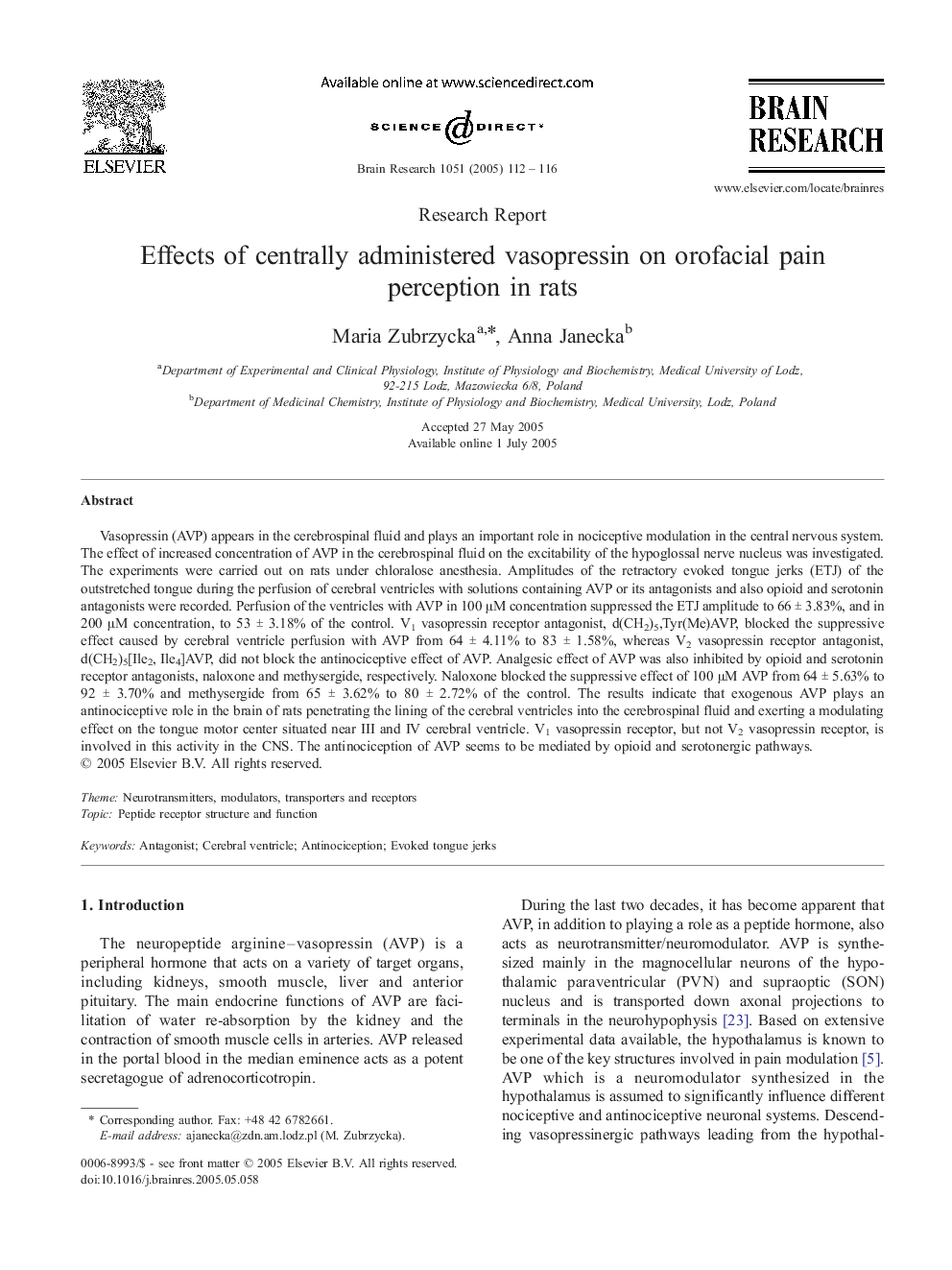| Article ID | Journal | Published Year | Pages | File Type |
|---|---|---|---|---|
| 9416057 | Brain Research | 2005 | 5 Pages |
Abstract
Vasopressin (AVP) appears in the cerebrospinal fluid and plays an important role in nociceptive modulation in the central nervous system. The effect of increased concentration of AVP in the cerebrospinal fluid on the excitability of the hypoglossal nerve nucleus was investigated. The experiments were carried out on rats under chloralose anesthesia. Amplitudes of the retractory evoked tongue jerks (ETJ) of the outstretched tongue during the perfusion of cerebral ventricles with solutions containing AVP or its antagonists and also opioid and serotonin antagonists were recorded. Perfusion of the ventricles with AVP in 100 μM concentration suppressed the ETJ amplitude to 66 ± 3.83%, and in 200 μM concentration, to 53 ± 3.18% of the control. V1 vasopressin receptor antagonist, d(CH2)5,Tyr(Me)AVP, blocked the suppressive effect caused by cerebral ventricle perfusion with AVP from 64 ± 4.11% to 83 ± 1.58%, whereas V2 vasopressin receptor antagonist, d(CH2)5[Ile2, Ile4]AVP, did not block the antinociceptive effect of AVP. Analgesic effect of AVP was also inhibited by opioid and serotonin receptor antagonists, naloxone and methysergide, respectively. Naloxone blocked the suppressive effect of 100 μM AVP from 64 ± 5.63% to 92 ± 3.70% and methysergide from 65 ± 3.62% to 80 ± 2.72% of the control. The results indicate that exogenous AVP plays an antinociceptive role in the brain of rats penetrating the lining of the cerebral ventricles into the cerebrospinal fluid and exerting a modulating effect on the tongue motor center situated near III and IV cerebral ventricle. V1 vasopressin receptor, but not V2 vasopressin receptor, is involved in this activity in the CNS. The antinociception of AVP seems to be mediated by opioid and serotonergic pathways.
Keywords
Related Topics
Life Sciences
Neuroscience
Neuroscience (General)
Authors
Maria Zubrzycka, Anna Janecka,
